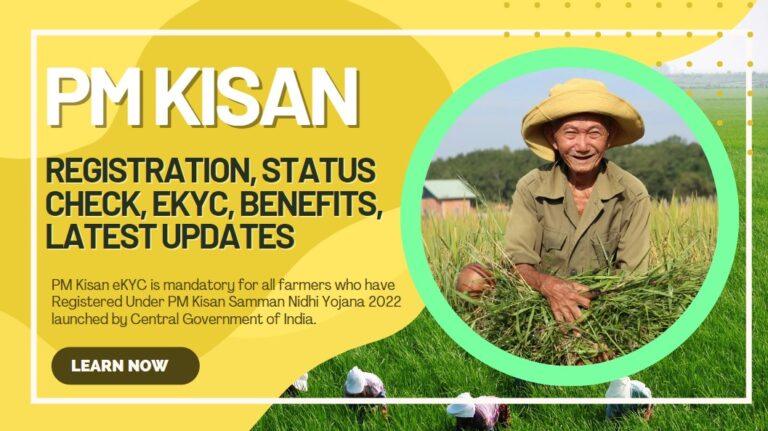Here we have discussed the top 5 Handloom Schemes for Weavers in India, these schemes are initiated by the government of India.
The intricate handiwork of India’s handloom tradition has a long history of preserving and embodying the vibrant Indian culture. The globe is well known for the unique hand spinning, weaving, and printing methods used by Indian loom weavers. Rural towns and villages, where talents are passed down from one generation to the next, are where they conduct business.
The handloom industry is a significant source of livelihood and a reflection of the varied and rich cultural history of our country in rural and semi-rural areas. It is also an industry that primarily addresses the empowerment of women, with more than 70% of all weavers and related workers being female. This sector generates over 19% of all fabric produced in the country, which also greatly increases export earnings. The handloom’s remarkable versatility and flexibility enable experimentation and spur innovative ideas.
You require a project report for a bank loan if you intend to apply for one through this government financial programme. Click here to get a detailed a project report for a bank loan.
The government must ensure “fair playing grounds” so that the various textile industry subsectors can engage in healthy competition in order to develop, progress, and support policies that retain this employment.
The government’s vision for the handloom industry is to develop a strong, competitive, and vibrant handloom sector in order to ensure inclusive growth of the industry and to provide sustainable employment to handloom weavers, particularly those who belong to the underprivileged section of Indian society through this handloom schemes.
The following things must be addressed right away in order to solve the issues facing weavers:
- It is crucial to have access to raw materials because their prices have been growing as a result of being produced and processed in far-off places, such as yarn, dyes, cotton, silk, and jute.
- Sectoral growth is not financially supported, and many regions need land, water, and energy for manufacturing.
- Investors and the need to safeguard handloom designs should encourage weavers to speed up market transformation.
- For the import and export of textiles, the handloom industry requires particular precautions. The market network for handloom products needs to be expanded, as well as their visibility.
- The budget needs to be raised in order to safeguard rural jobs and undertake new initiatives that address the sector’s challenges.
- Using natural dyes, organic cotton and yarn, and enhancing loom productivity via research and innovation are all essential steps to raising the value of handloom products.
- Some groups of handloom weavers are living on the edge since they have no home or assets. In order to solve these issues, the government must implement the Minimum Wages Act.
Top 5 Handloom Schemes from the Government of India
National Handloom Development Programme (NHDP)
- A central sector plan scheme called the National Handloom Development Programme (NHDP) has been created for the fiscal years 2021–2022–2025–2026.
- The strategy would use a need-based approach to provide weavers with raw materials, design inputs, technology upgrades, marketing help through exhibits, and permanent infrastructure in order to promote the holistic growth of handlooms and the welfare of handloom weavers.
- The cluster growth method places a major emphasis on the formation of each group as a distinct, visible entity. This handloom-focused cluster will be established at the Block level, and depending on the number of handlooms in a block, more than one cluster may be taken up in that block.
- Building and promoting marketing channels in both the domestic and export markets, as well as forging a comprehensive and integrated connection between them, are the objectives of the handloom marketing assistance.
Comprehensive Handloom Cluster Development Scheme (CHCDS)
- The Indian government uses the Comprehensive Handloom Cluster Development Scheme (CHCDS) to create massive handloom clusters with at least 15000 looms each.
- Mega Handloom Clusters will be the focus of comprehensive development initiatives, for which thorough development plans will be developed. With a commitment from the Indian government of up to Rs. 30 crores, each giant handloom cluster will cover at least 10,000 handlooms, and each Mega Cluster will get assistance at a level and kind decided by its needs.
- The eight mega handloom clusters where the programme is being implemented are Varanasi (Uttar Pradesh), Sivasagar (Assam), Virudhanagar (Tamil Nadu), Murshidabad (West Bengal), Prakasam & Guntur districts (Andhra Pradesh), Godda and surrounding districts (Jharkhand), Bhagalpur (Bihar), and Trichy (Tamil Nadu).
- Need-based funding is provided for a range of interventions, including technological development, product development, the creation of Value Addition Centers, Common Facility Centers (CFC), Marketing Complexes, Dye Houses, and Corpus Fund for Yarn Depots.
Handloom Weavers’ Comprehensive Welfare Scheme (HWCWS)
- The programme aims to provide an affordable, universal Social Security to handloom workers and weavers across the country.
- Protection from natural death, accidental death, and total and partial disability is provided by insurance.
- Children of handloom weavers and workers are given financial aid in the form of scholarships of up to Rs. 2 lakhs each year so that they can attend textile institutes.
- The Handloom Weavers Comprehensive Welfare Scheme (HWCWS) provides life, accident, and disability insurance coverage through the Pradhan Mantri Jeevan Jyoti Bima Yojana (PMJJBY), Pradhan Mantri Suraksha Bima Yojana (PMSBY), and Converged Mahatma Gandhi Bunkar Bima Yojana (MGBBY) programmes.
Weavers Mudra Scheme
- The program’s goal is to give banks the ability to quickly and effectively meet the nation’s handloom industry’s credit needs for term loans and working capital.
- Under the Weaver MUDRA Scheme, credit is made available to handloom weavers at a preferential 6% interest rate. Weavers are additionally given a 3-year credit guarantee and a maximum of Rs. 10,000 in margin money support.
- MUDRA Portal has been built in partnership with Punjab National Bank to minimise delays in the disbursement of funds for margin money and interest subvention.
- The margin money support is sent directly to the weaver’s loan account, and the portal is used to transfer the interest subsidies to the banks.
- The portal’s URL is https://www.mudra.org.in.
Yarn Supply Scheme
- The Yarn Supply Scheme (YSS) is being implemented across the country by the National Handloom Development Corporation to make all types of yarn available at Mill Gate Price.
- Under the Scheme, all types of yarn are eligible for freight cost reimbursement. Hank yarn made of cotton, domestic silk, wool, and linen is also qualified for a 10% price discount with quantity restrictions.
- To promote a consistent supply of necessary raw materials to the handloom sector and help the sector realise its full employment potential, the goal is to make all types of yarn available to competent handloom weavers at Mill Gate Prices.
- The programme maintains weavers’ participation in the handloom sector by providing superior quality yarn at lower prices than the open market through depots.
The government has implemented numerous programmes to improve the handloom sector. The efficiency of the government programmes is highlighted by Fibre2fashion.
By combining the various Handloom Schemes of the 10th Five year plan, the Ministry of Textiles announced the following five Schemes in the 11th Five year plan.
These five schemes for the Promotion and Development of the Handloom Sector are administered by the Office of the Development Commissioner for Handlooms in New Delhi, which is led by Shri B.K. Sinha, IAS, Development Commissioner for Handlooms and operates under the Ministry of Textiles. The office also offers assistance to the handloom weavers in four different ways. Weavers’ Service Center (WSCs), Indian Institute of Handloom Technology (IIHTs), and the Regional Office of the DCH are some of its subordinate entities (Enforcement Wing)
The summaries of the 11th Five Year Plan’s five schemes are provided below. You can find all the information at www.handlooms.nic.in.
The 11th Five Year Plan’s Five Schemes
- Integrated Handlooms Development Scheme (IHDS)
- Mill Gate price scheme.
- Handloom Weavers Welfare Scheme.
- Marketing and Export promotion Scheme.
- Diversified Handloom Development Scheme.
The Prime Minister, Shri Narendra Modi, has urged support for regional handloom goods, claiming that they demonstrate India’s variety and the skill of innumerable weavers and artisans.
On August 7, India celebrates National Handloom Day in honour of its handloom industry and weavers. The National Handloom Development Program’s main initiatives to energise the industry are listed above.
Indian weavers frequently employ the handloom, a manually controlled loom. In order to honour these weavers and the nation’s handloom industry, India has commemorated National Handloom Day on August 7 since 2015.
To support India’s handloom industry, the National Handloom Development Programme (NHDP) handloom schemes is being implemented by the Office of the Development Commissioner for Handlooms and the Ministry of Textiles.
We have also discussed the actions made to inform the handloom schemes for weavers of social programmes. The handloom scheme is implemented by holding an awareness workshop for the weavers and cluster actors, performing a detailed baseline survey, and creating an action plan based on the results of the baseline study.
Disclaimer: This website’s content, products, and services are offered “as is” and “as available” without any explicit or implied warranties or representations. The sole purpose of Udyam Registration Form blogs is to educate readers about financial services and products. Udyam Registration Form does not promise that the service will satisfy your needs, be speedy, secure, or error-free. It also does not promise that the service will be uninterrupted. Only broad informational purposes are served by the content and information provided here. Before relying on the information to make any legal, financial, or business decisions, consult a specialist. You should only use this material at your own risk.
If any information on the website is erroneous, inaccurate, or incomplete, Udyam Registration Form will not be held responsible. Although every effort is made to ensure that the information on this website is current, pertinent, and accurate, Udyam Registration Form makes no representations or warranties as to the entirety, reliability, accuracy, suitability, or availability with respect to the website or the information, products, services, or related graphics contained on the website with respect to the website or the information, products, services, or related graphics contained on the website for any purpose. Udyam Registration Form disclaims all responsibility for any loss or damage resulting from the use of, access to, or inability to use or access the website while it is temporarily inaccessible due to any technical problems or other causes without its control.




